Table of Contents
Introduction
In this article, I will discuss the forest in Bihar along with their classification, distribution and location. Being an integral part of the natural resources and ecosystem, forests play a vital role in regulating the hydrological cycle, conserving soil and proving forests resources. Apart from these, they also provide habitat to the wildlife, flora and fauna, and recreational opportunities.
Earth provides enough to satisfy every man’s needs, but not every man’s greed.
Mahatma Gandhi
Before discussing the forest in Bihar, take a look at the forest area of the top 10 countries around the world.
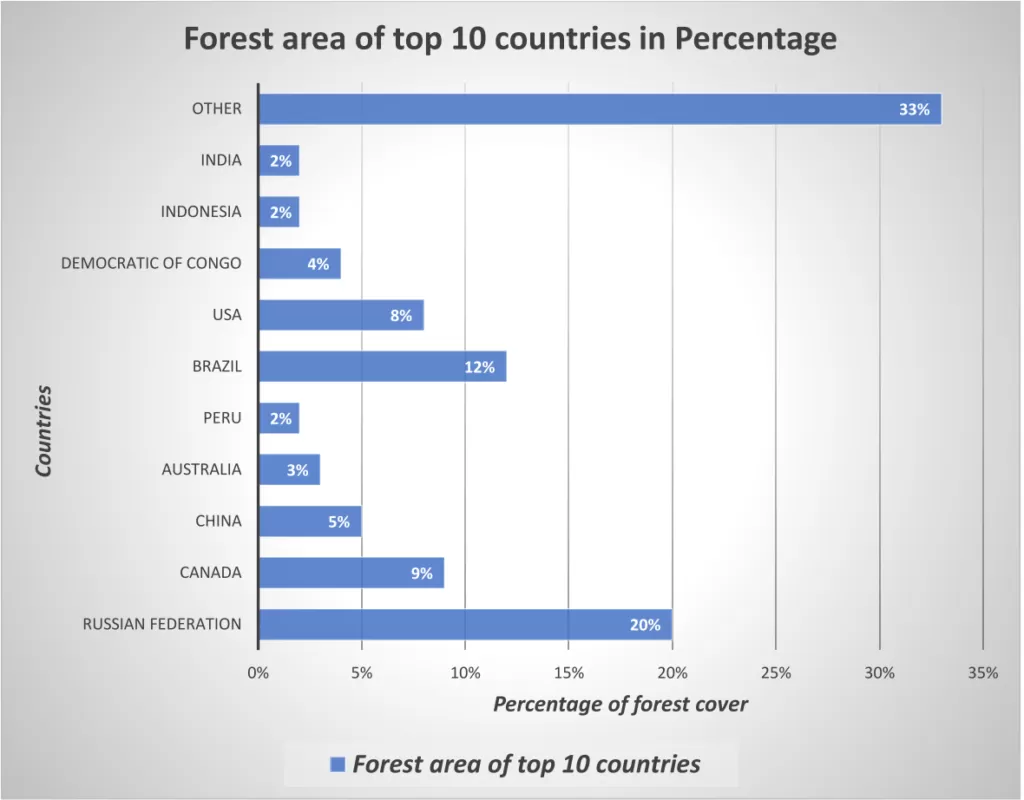
Geographically, Bihar is endowed with rich deciduous forests, spreading over the southernmost district of Kaimur; Rohtas, Aurangabad, Gaya, Jamui, Munger and Banka. Moreover, the moist deciduous forest occupies the districts of West Champaran in the northern plains of Bihar. Overall, the forest and logging sector of Bihar has accounted for 1.6% of the Gross state value addition (GSVA) during 2014-2019.
Read a full article about the Deciduous forests at geography4u/deciduous-forest
Share of Forestry and Logging in Agriculture GSVA (2017 to 2019).
| Sectors | 2017-18 | 2018-19 |
| Crops | 41458 (in crores) | 39853 (in crores) |
| Livestock | 19298 (in crores) | 20922 (in crores) |
| Forestry and Logging | 5671 (in crores) | 5948 (in crores) |
| Fishing and Aquaculture | 5536 (in crores) | 5670 (in crores) |
| Agriculture, Forestry and Fishing | 71963 (in crores) | 72393 (in crores) |
The area under forest in Bihar
The legally notified area of forest as per the records of the government are classified under Recorded forest area (RFA). Under the provision of Indian Forest act of 1927 or States acts, the recorded forest area consists of the Reserved forest, the protected forests and the Unclassified forests.
The Recorded forest area of Bihar
In 2019, the recorded forest area in Bihar was nearly 7.3% of the total geographical area of Bihar. In terms of percentage, it was around 6877km2. However, the share of the forest of Bihar (7.3%) is much lesser than the All-India average of 23.3%. On the other hand, Uttarakhand has the highest share of the recorded forest at 71.1%, while Haryana has only 3.5%, which is the lowest. In terms of protected forests, Bihar’s area stood at 6183 km2, which is 6.6% of the state’s geographical area.

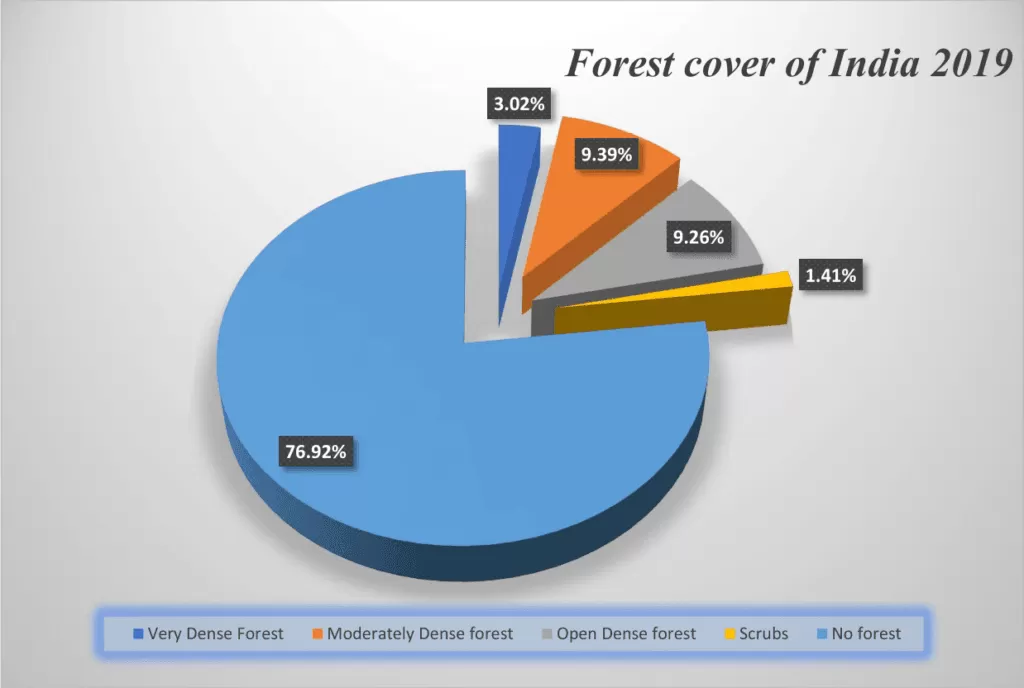
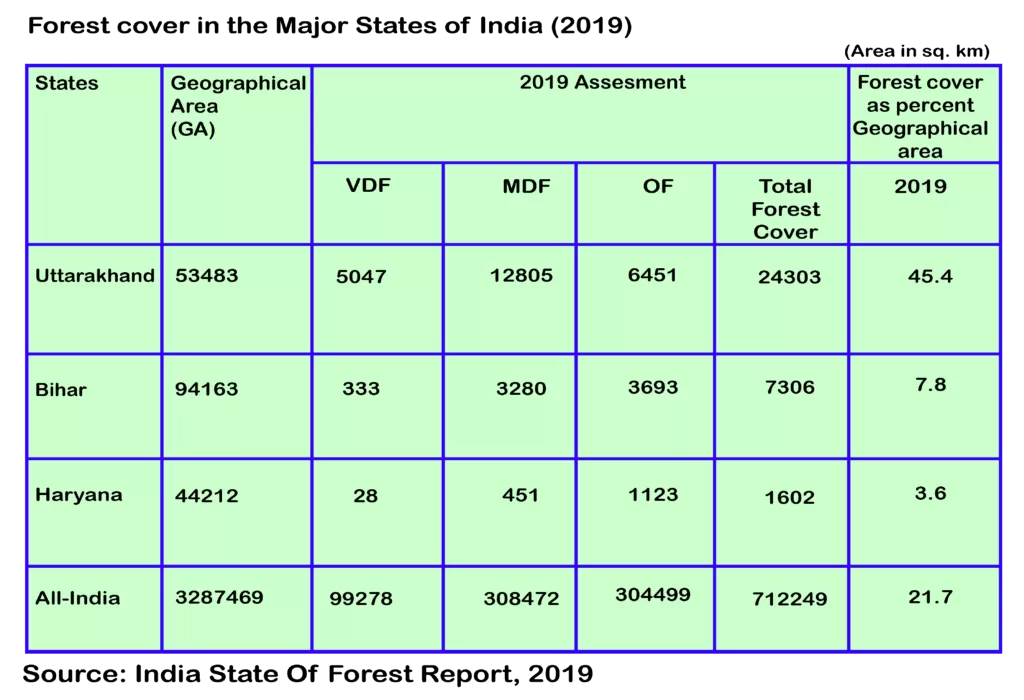
Area under forest cover
In terms of the area under forest cover, Madhya Pradesh has the largest forest cover at 77,482 km2, accounting 10.9% of the total forest cover in the country. However, the lowest forest cover was observed in Haryana 1602 km2 which was 0.2%. Following the same trend, the forest cover of Bihar was also low 7306 km2, accounting for 1% of the total forest cover in India.
Classification of Forests
Based on the density of crown, the forests are classified under five categories namely- very dense forest (V.D.F), Moderately dense forests (M.D.F), Open forest (O.F), scrubs and non-forests.
| Types of forest | Description |
| Very dense forest | having tree canopy density of 70% and above. |
| Moderately dense forest | having tree canopy density between 40% to 70%. |
| Open forest | having tree canopy density between 10% to 40%. |
| Scrub | Forest land with canopy density of less than 10%. |
| Non-Forest | Lands not included in any of the above class. |

Very dense forests 
Moderately dense forest 
Open forest 
Scrubs
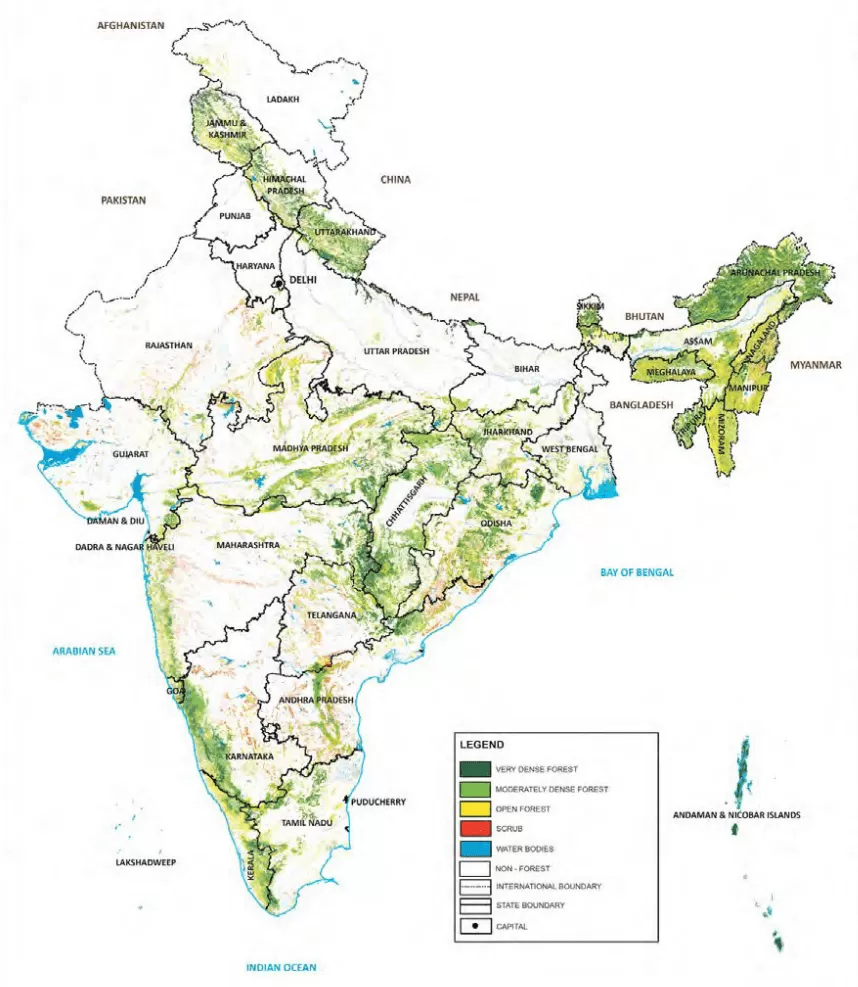
Forest and tree cover in Bihar
| Particulars | 2019 |
| Tree cover | 2003 (in Sq.Km) (2.1%) |
| Forest cover | 7306 (in Sq.Km) (7.8%) |
| Forest and Tree cover | 9309 (in Sq.Km) (9.9%) |
It is very appreciating that the total forest cover in Bihar has marginally increased from 6845 km2 in 2011 to 7306 km2 in 2019. The total forest and tree cover together constituted about 9309 km2 in 2019. In terms of percentage, it was about 9.9% of the total geographical area of Bihar.
| Types of forests | 2017 | 2019 |
| Very Dense Forest | 332 km2 | 333 km2 |
| Moderately Dense Forest | 3260 km2 | 3280 km2 |
| Open Forest | 3707 km2 | 3693 km2 |
| Total | 7299 km2 | 7306 km2 |
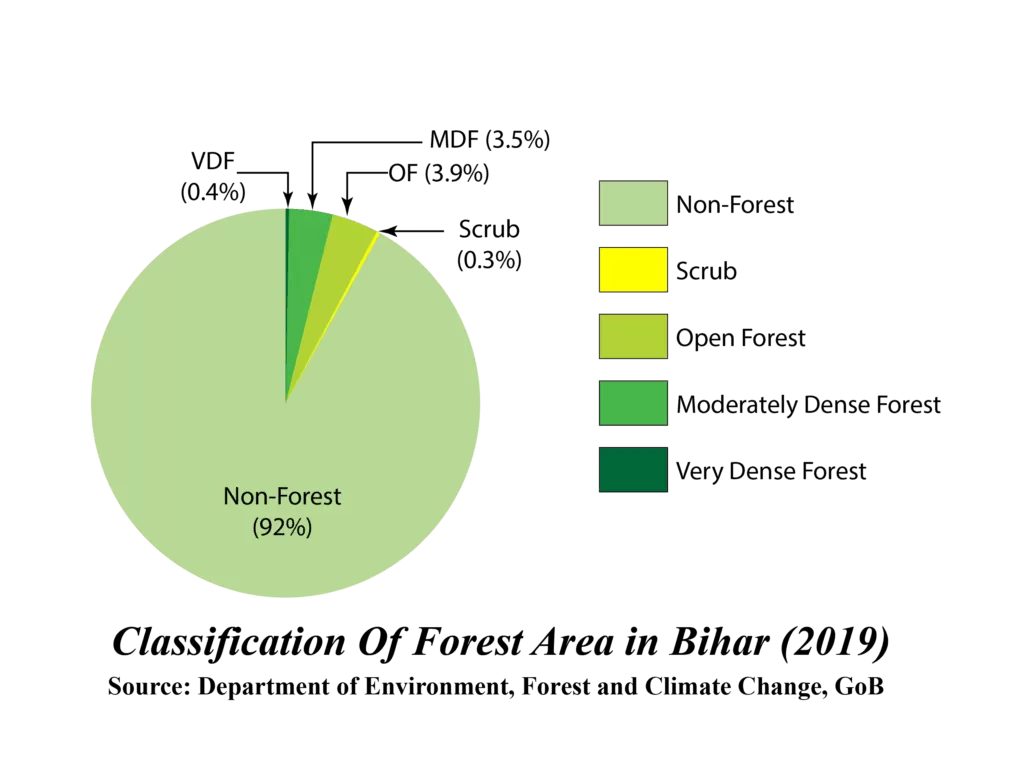
Districtwise forest cover in Bihar
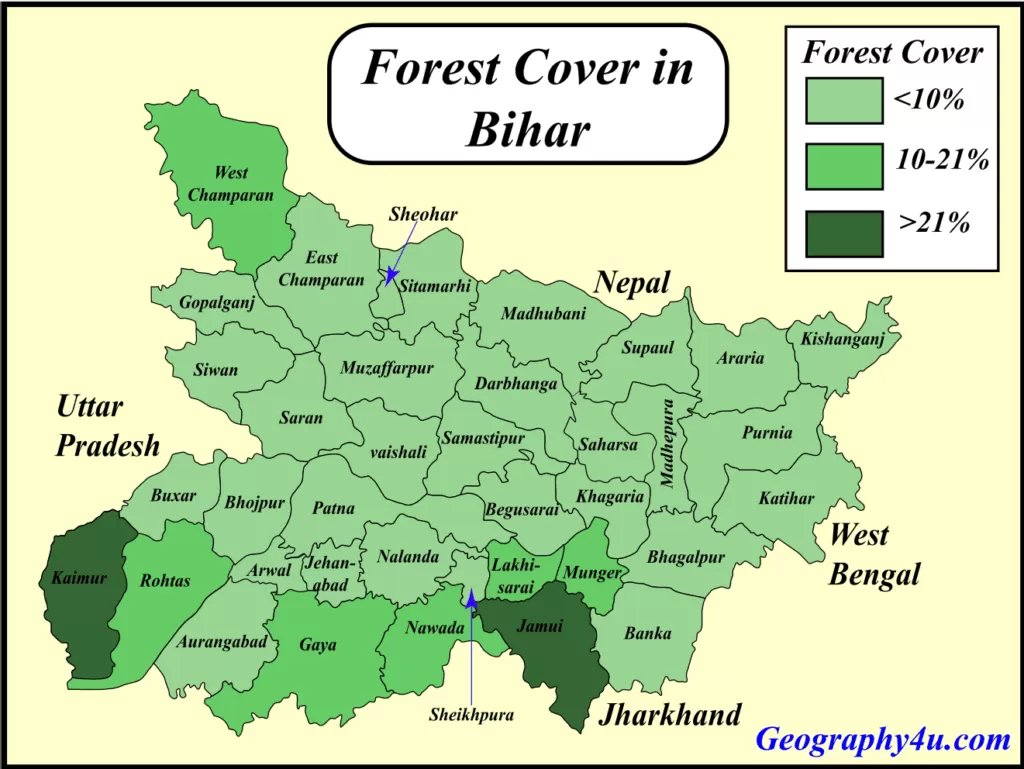
The districts of Kaimur, West Champaran, Rohtas, Jamui and Gaya together accounted for 53.0% of the total forest cover in Bihar during 2019. However, southern Bihar is endowed with dense forest.
| Highest forest cover | Kaimur (1056.4 km2) |
| Lowest forest cover | Jehanabad (No forest) |
Among the types of forest, West Champaran owns the largest very dense forests, having a crown density above 70%. On the other hand, Kaimur is the leading district in terms of open forests of Bihar, accounting for 531.3 km2 (14.4% of total forest cover).
Top Three districts in terms of geographical area of forest in districts
| Districts | Percentage |
| Kaimur | 31.4% |
| Jamui | 20.9% |
| Nawada | 20.6% |
Biodiversity and Wildlife in Bihar
| Name of Reserve | Location (District) and Area | Wildlife Species |
| Valmiki Tiger Reserve | West Champaran (893.73 Sq. Km) | Tiger, Indian Rhinoceros, Black Bear, Indian Sloth Bear, Otter, Indian Leopard, Wild Dog, Buffalo, Boar, Barking Deer, Spotted Deer, Hog Deer, Sambar, Blue Bull, Hyena, Leopard Cat, Wild Cat, Fishing Cat, Langur, Monkey, Mongoose, Flying Squirrel, Clouded Leopard, Indian Gaur. |
| Wildlife Sanctuaries | Location (District) and Area | Wildlife Species |
| Bheembandh Wildlife Sanctuary | Munger 681.9 Sq.Km | Black Bear, Boar, Barking Deer, Spotted Deer, Hog Deer, Blue Bull, Leopard Cat, Wild Cat, Langur, Monkey, Mongoose. |
| Gautam Buddha Wildlife Sanctuary | Gaya 138.33 Sq.Km | Black Bear, Boar, Barking Deer, Spotted Deer, Hog Deer, Blue Bull, Leopard Cat, Wild Cat, Langur, Monkey, Mongoose. |
| Pant Wildlife Sanctuary, Rajgir | Nalanda 35.84 Sq.Km | Black Bear, Boar, Barking Deer, Spotted Deer, Hog Deer, Blue Bull, Leopard Cat, Wild Cat, Langur, Monkey, Mongoose. |
| Kaimur Wildlife Sanctuary | Kaimur & Rohtas 1504.94 Sq. Km | Black Bear, Boar, Barking Deer, Spotted Deer, Hog Deer, Blue Bull, Leopard Cat, Wild Cat, Langur, Monkey, Mongoose. |
| Rajauli Wildlife Sanctuary (Nawada) | Nawada 2.72 Sq. Km | Black Bear, Boar, Barking Deer, Spotted Deer, Hog Deer, Blue Bull, Leopard Cat, Wild Cat, Langur, Monkey, Mongoose. |
| Udaipur Wildlife Sanctuary | West Champaran 3.19 Sq.Km | Ox-Bow lake with Swampy Forest. |
| Nagi Dam Bird Sanctuary | Jamui 1.92 Sq.Km | Water Birds, Migratory Birds. |
| Nakti Dam Bird Sanctuary | Jamui 3.33 Sq.Km | Water Birds, Migratory Birds. |
| Kaabar Jheel Bird Sanctuary | Begusarai 63.12 Sq.Km | Water Birds, Migratory Birds. |
| Kusheshwarsthan Bird Sanctuary | Darbhanga 29.21 Sq.Km | Water Birds, Migratory Birds. |
| Salim Ali Jubba Sahni Baraila Jheel Bird Sanctuary | Vaishali 1.98 Sq.Km | Water Birds, Migratory Birds. |
| Vikramshila Gangeya Dolphin Sanctuary | Bhagalpur 60 Sq.Km | Gangetic Dolphin (platanista Gangetica), Freshwater Fishes and Turtle. |
SDG GOALS FOR FOREST CONSERVATION
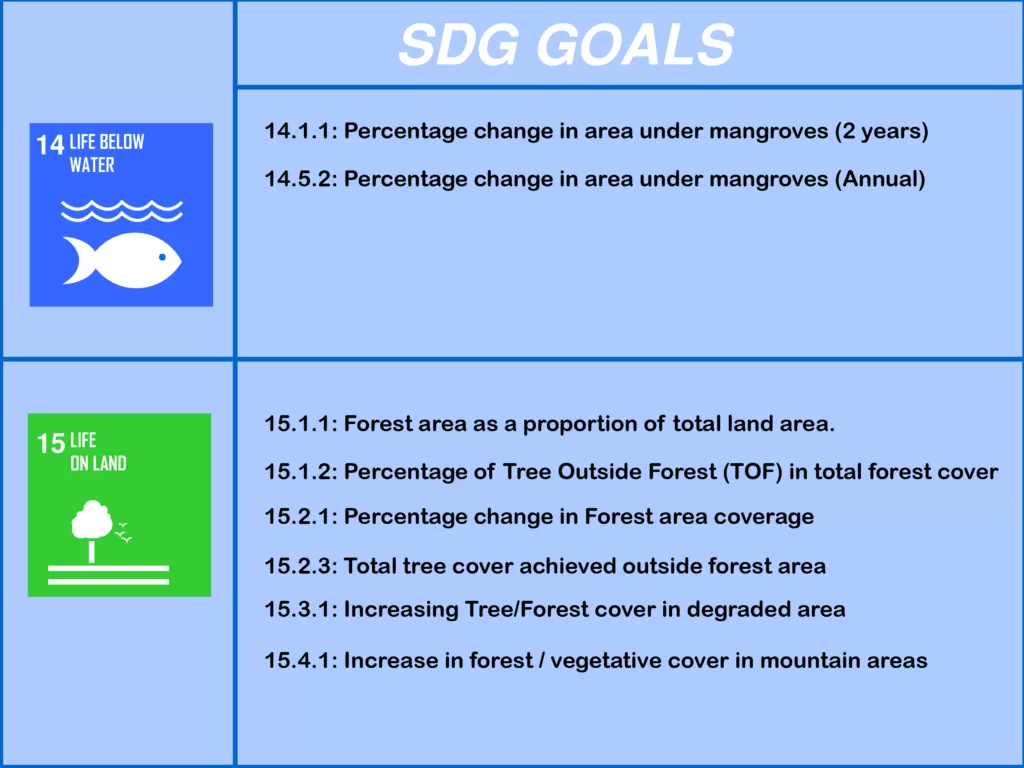
Schemes of forest department of Bihar
The department of environment, forest and climate change of Bihar has undertaken various measures to protect the environment of the state. The following are the major schemes of the Bihar government to conserve forests.
Krishi Vaniki- other species Yojana
This scheme has been implemented since 2012-13 in Bihar to encourage plantation of other species. For instance, Teak, Mahogany, Beechwood, Rosewood and Khair. Under this scheme, free samplings are being provided to the farmers during the rainy season. During 2018-19, about 57.78 lakh saplings of the other species have been planted in Bihar.
Krishi Vaniki- Poplar Yojana (ETP)
Under this scheme, the farmers of Bihar are being motivated to plant commercial Poplar plants to increase tree cover for environmental protection. Also, the farmers get cash incentives towards the maintenance of the plants.
Mukhya Mantri Niji Paudhshala-Poplar ETP yojana
This scheme aims to set up nurseries with quality plants belonging to different species through entrepreneurs and farmers. The farmers get subsidies at the rate of Rs 10000 for cutting per acre. Also, this scheme is implemented in all the districts of Bihar.
Har Parisar Hara Parisar Yojana
Due to the shortage of forest land in Bihar, this scheme was launched to increase both the purity and greenery in the environment. Also, the vacant lands on the premises of government and non-government institutions are being planted with suitable species.
Greening of Urban spaces
The prime objective of this scheme is to promote projects related to landscaping of urban parks and green spaces in the urban areas.
Jal- Jeevan Hariyali Campaign
Due to climate change and global warming, the government of Bihar is focusing on managing water, forests and other natural resources to reduce the risks of environmental degradation. Therefore, a target has been fixed for plantation of 1.5 crore plants per year. Initially, the campaign for the Jal-Jeevan-Hariyali scheme was launched on August 9, 2019, on Bihar Earth day.
Jal-Jeevan-Hariyali Tabhi Hogi Khush-Hali (Only Jal Jeevan and Hariyali can bring Happiness)
Moto of Jal Jeevan Hariyali Campaign
FAQs: forest in Bihar
Name the district having largest forest cover in Bihar.
According to forest report 2019 of Bihar, Kaimur in the Patna division has the largest forest cover in Bihar (1056.4 sq. km).
Name the district having smallest forest cover in Bihar.
Jehanabad in the Patna division has smallest forest cover in Bihar, accounting 0 sq. km area under forest cover (2019).
What is the total area under forest cover in Bihar?
According to state forest report of Bihar 2019, the total forest cover in Bihar is about 7306.0 sq. km.
Name the district having a maximum very-dense forest in Bihar?
West Champaran in Tirhut division has a maximum very-dense forest in Bihar, accounts for 249.2 sq. km.
What is the total area under open forest in Bihar?
The total area under open forest in Bihar is about 3692.5 sq .km.
What are the districts having very dense forests in Bihar?
According to 2019 report on forests of Bihar, only four districts are having a very dense forest in Bihar as following.
1. West Champaran (249.2 sq. km)
2. Munger (38 sq. km)
3. Jamui (29 sq. km)
4. Lakhisarai (17 sq.km)
Major References
- How did the theory of plate tectonics evolve over time?
- 7 Criticisms of Continental Drift Theory by Alfred Wegener
- Malthus theory of population: critical analysis & relevance
- Major Types of Clouds formation and their Characteristics
- Get Detailed Bpsc syllabus 2022-23
- Complete bpsc geography optional syllabus 2022

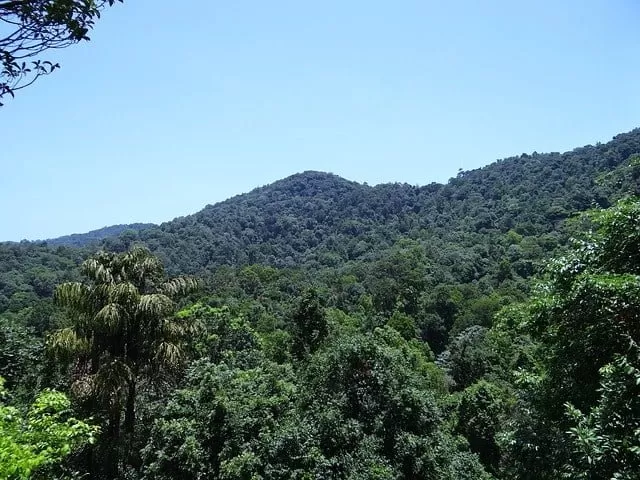
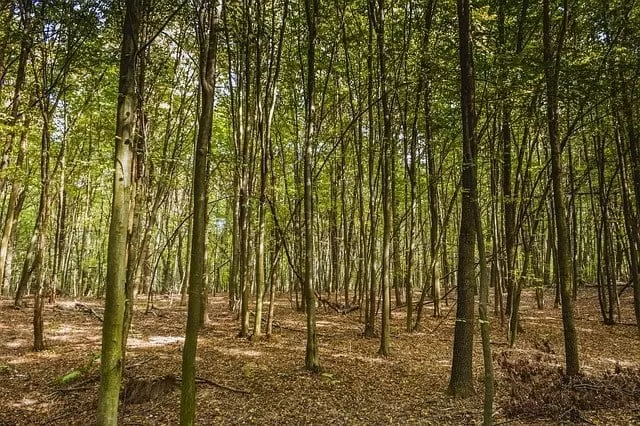
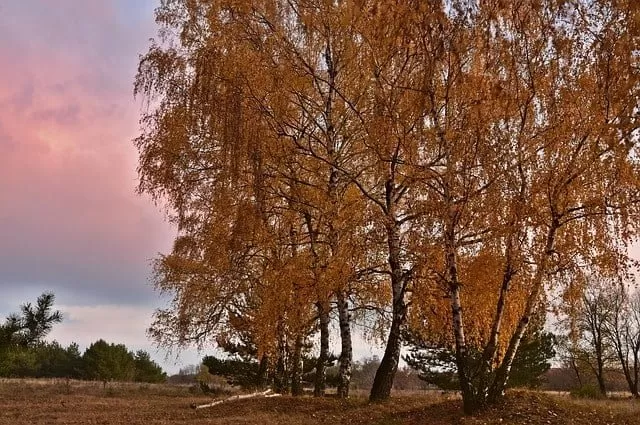
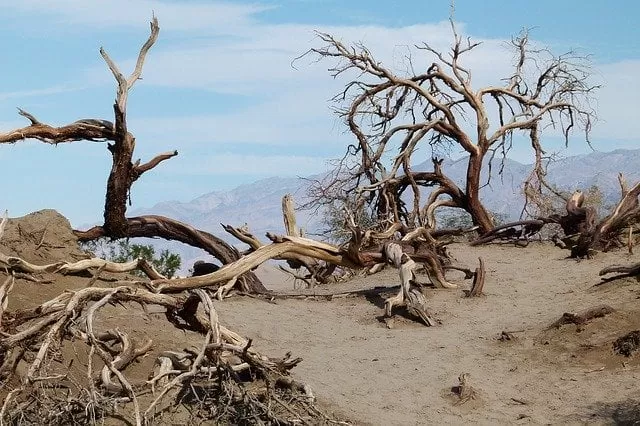
Pingback: Get Detailed Bpsc syllabus 2022-23 | Geography4u.com